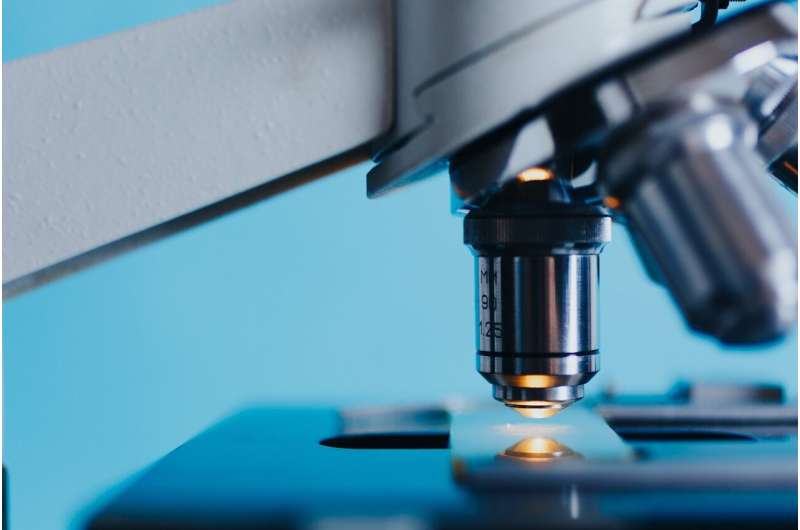This article has been reviewed according to Science X's editorial process and policies. Editors have highlighted the following attributes while ensuring the content's credibility:
fact-checked
peer-reviewed publication
trusted source
proofread
Researchers identify molecules that optimize immune presentation of antigens across the human population

Researchers at Children's Hospital of Philadelphia (CHOP) have identified variants of a chaperone molecule that optimizes the binding and presentation of foreign antigens across the human population, a finding that could open the door to numerous applications where robust presentation to the immune system is important, including cell therapy and immunization. The findings were published today in Science Advances.
Class I major histocompatibility complex (MHC-I) proteins are found on the surface of cells from all jawed vertebrates and play an essential role in the immune system. The MHC-I displays peptide fragments of proteins from within the cell on the cell surface, effectively "presenting" them to the immune system, which is constantly scanning the body for foreign or toxic antigens. When foreign peptides are identified, they trigger a cascade that allows cytotoxic T cells to eliminate intruders.
For a peptide to be presented to the immune system, it needs to be loaded on a folded MHC-I protein. Several molecules facilitate this process, including proteins known as molecular chaperones, which assist with MHC-I folding. Tapasin and a similar molecule known as TAPBPR are both molecular chaperones that facilitate MHC-I folding and peptide loading. Because TAPBR functions independently outside of the peptide-loading complex, it is well-suited for clinical applications that involve peptide exchange, such as loading immunogenic peptides on MHC-I molecules and generating libraries to detect T-cells that recognize peptides or antigens from infected or cancerous cells.
However, TAPBPR-mediated peptide exchange has thus far only worked for a limited set of common allotypes of human MHC-I, known as human leukocyte antigen (HLA), which has limited wider use of these technologies in biomedical applications. Over time, HLA subtypes, which include HLA-A, HLA-B, and HLA-C, have evolved such that not all alleles interact equally well with TAPBPR. This has been a roadblock in developing and enhancing novel therapies with the help of molecular chaperones, as some HLA allotypes do not interact with these molecules.
To solve this problem, the CHOP researchers analyzed three different TAPBPR proteins: one from humans, one from chickens, and one from mice. They found that unlike human TAPBPR, chicken TAPBPR co-evolved with its class I genes, so that it maintains high affinity across MHC-I allotypes. In their analysis, they found that chicken TAPBPR was able to react with multiple HLA allotypes, many of which were not able to bind to human TAPBPR. They also demonstrated that TAPBPR stabilizes the empty MHC-I groove in an "open" conformation, boosting its affinity for peptide loading.
Simultaneously, in close collaboration with researchers at the University of Illinois led by Erik Procko, Ph.D., the research team used deep mutational scanning to characterize the effects from hundreds of point mutations on human TAPBPR and found a variant that mimics the chicken sequence. Like the chicken TAPBPR, this variant enhanced peptide exchange across a broad range of HLA types.
"Although the highly polymorphic nature of MHC-I molecules makes it challenging to engineer 'universal' chaperones, our research team demonstrated that both a chicken ortholog of TAPBPR and a human variant with minor adjustments could enhance peptide exchange across multiple disease-relevant HLAs," said senior author Nikolaos G. Sgourakis, Ph.D., Associate Professor in the Center for Computational and Genomic Medicine at Children's Hospital of Philadelphia.
"These TAPBPR orthologs could be utilized in various cancer immunotherapeutic settings to narrow the peptide repertoire and increase immunogenicity. The knowledge gained by our studies can guide the design of engineered TAPBPR variants with tailored HLA specificity and catalytic efficiency for peptide exchange applications both in vitro and in vivo."
More information: Yi Sun et al, Xeno-interactions between MHC-I proteins and molecular chaperones enable ligand exchange on a broad repertoire of HLA allotypes, Science Advances (2023). DOI: 10.1126/sciadv.ade7151. www.science.org/doi/10.1126/sciadv.ade7151





















